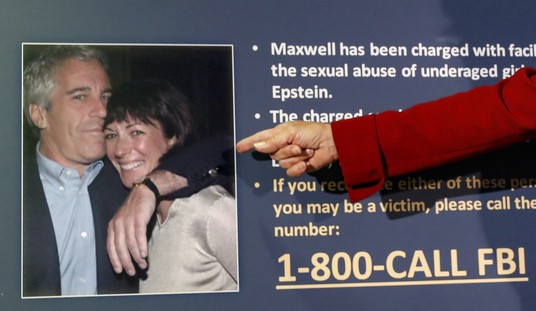Should cash strapped local law enforcement agencies be employing “volunteer” sheriffs and police officers in hot criminal investigations and arrests? That’s a question which is now being debated after 73 year old retired insurance company CEO Robert Bates was charged with involuntary manslaughter in the death of criminal suspect Eric Harris in Tulsa, Oklahoma. How “good” of a shoot this one was is also under debate, but perhaps not as much as the question of whether Bates should have been in the midst of a group of officers running down a violent crime offender in the first place.
A Tulsa, Oklahoma reserve sheriff’s deputy was charged with second-degree manslaughter Monday for the shooting death of an unarmed black man.
The charges against Robert Charles Bates came hours after the family of the dead man, Eric Courtney Harris, accused deputies of treating him inhumanely after he was shot at the conclusion of an April 2 foot chase stemming from a sting operation in which Harris had allegedly arranged to sell a gun to undercover officers from the Tulsa County Sheriff’s Office Violent Crimes Task Force.
Before we get to both of the questions I began with, here’s the video footage which captures the chase and the shooting so you can evaluate it for yourself. (Warning for disturbing content.)
While something clearly went awry here, let’s begin with the suspect. NBC uses the now ubiquitous “unarmed black man” in their lede, but asking whether or not the sheriffs should have been treating the suspect as potentially dangerous seems beyond disingenuous. They were already familiar with Harris and his rather extensive history which includes violent crime. And what was Harris doing when this event began? He was attempting to illegally sell a handgun to an undercover officer in a sting operation. And while running, the suspect can be seen making a motion which certainly could be interpreted as reaching for something in his waistband. Under those circumstances, ruling out the possibility that he had another gun on him would have been suicidally foolish on the part of the police.
But still, a mistake was made and it centers on Bates. He can clearly be heard shouting “Taser!” as the suspect is taken down and then immediately apologizing, saying, “I shot him” after he discharged his service weapon instead of the non-lethal force. Trying to claim that Bates did this intentionally strains credulity unless the guy is also a trained actor with a couple of Oscar nominations to his credit. He was clearly intending to defuse the potentially lethal situation by Tasing the suspect, but grabbed the wrong pistol grip. (The model of Taser used by the department has a grip similar to a handgun.)
Unfortunately, just saying “I’m sorry” isn’t really enough in a situation where a man has died, so I’m not going to bark too loudly about the county deciding to move ahead with a trial. Involuntary manslaughter is probably the most which could be reasonably expected here and a jury may still decide that Bates’ actions didn’t even meet the bar for that.
But the second question coming from this incident is probably more interesting. Bates was not a paid, full time member of the Sheriff’s Office. He was a volunteer, and one who had been a donor to both the department and the political campaign of the sheriff. This already has people asking if Bates “paid to be a cop” through his generous donations. (He gave $2500 to Sheriff Blanz’s 2012 election campaign and donated cars to the department.)
So how did the 73-year-old insurance company CEO end up joining a sting operation this month that ended when he pulled out his handgun and killed suspect Eric Harris instead of stunning him with a Taser?
A lawyer representing the Harris family says the answer is simple.
Bates paid big money to play a cop in his spare time, attorney Daniel Smolen says, but he didn’t have the training to handle the job.
The “lack of training” question seems to be on thin ice. While he was not currently an active duty law enforcement officer, Bates did work as a police officer in the 1960s, so he must have had some original training. Also, since becoming a volunteer sheriff he had undergone either 300 or 400 hours of required training. (Media reports differ on the exact amount.) Bates had more than 1,000 hours of active experience on the streets by the time this happened, so portraying him as some yahoo who paid a lot of money to go waving a gun around in the town square like a vigilante seems unfair.
But at the same time, he was not an active duty, paid officer with full, modern training required for troopers and sheriffs. So should the Sheriff’s Office (or other police force units) be using volunteers? While there need to be proper procedures in place to keep the professionals on the front line, I don’t see why not. Law enforcement budgets across the nation are strained to the limit and the cops can use all the help they can get. This is really just an upgraded version of a citizen’s watch. It’s true that I wouldn’t personally want to see the volunteers being tasked with physically taking down violent felons when there are regular troops on hand, (as there were here) but from the video you can also see how the initial bust went bad when Harris bolted from the vehicle and took off down the street. In the heat of the chase, Bates probably should have held back and let the professionals handle it, but I imagine most of us would be hard pressed to say what we’d do in the heat of the moment under such circumstances.
This unfortunate incident should not be used by the media as an excuse to attempt to strip law enforcement agencies of even more resources, but it can serve as a cautionary tale about standardized procedures regarding when and how volunteers are used. This shooting was avoidable in a couple of ways, but it doesn’t look like any of them involve actual malice on the part of Robert Bates.








Join the conversation as a VIP Member